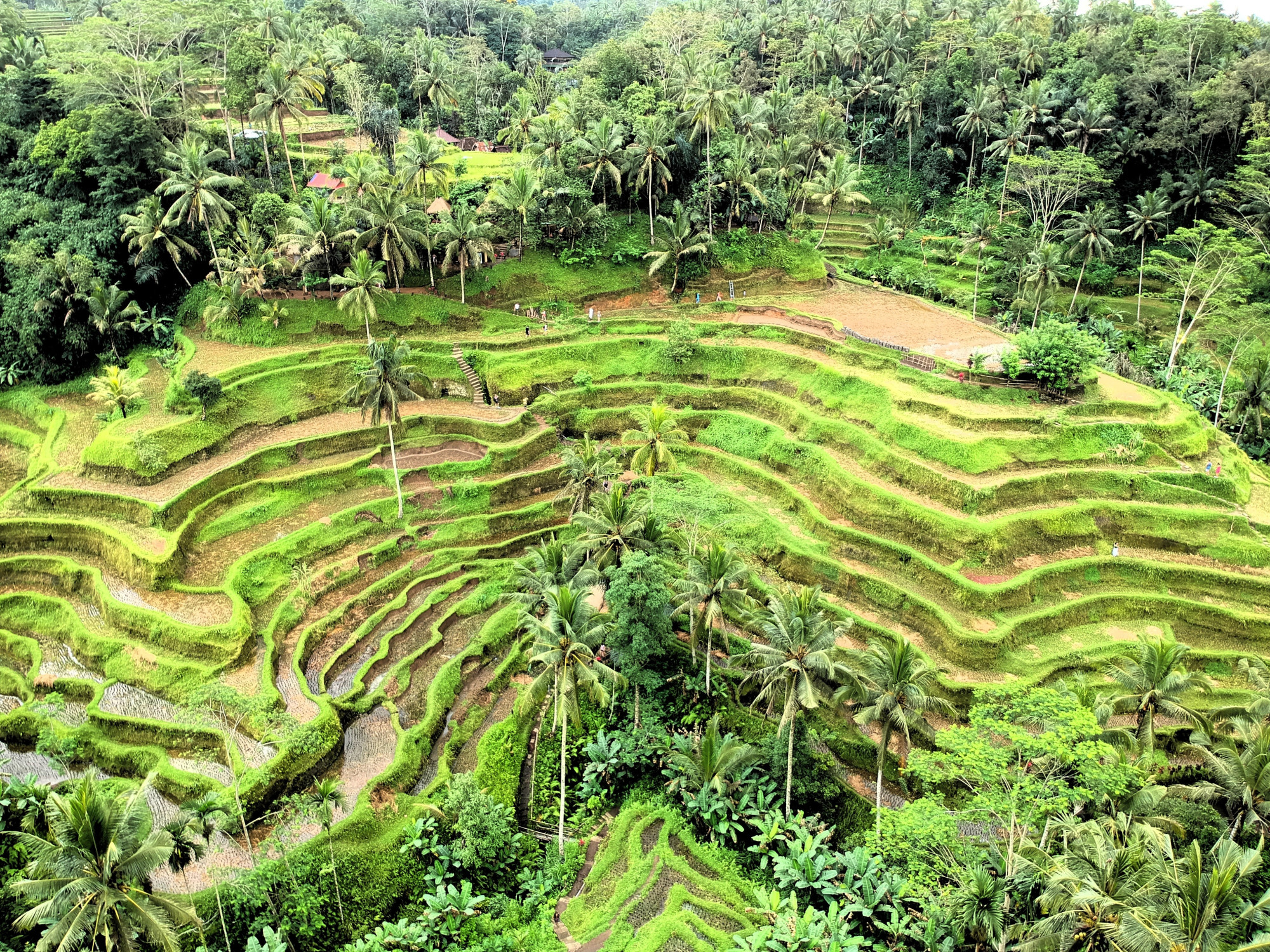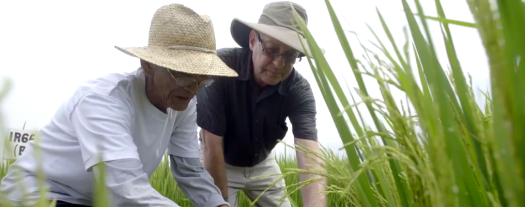How far along are we on the path to cultivating Green Super Rice?
In the 5 years I have been leading the AXA Chair at the International Rice Research Institute (IRRI), we have gone a long way towards our common objective: to leverage the genomics of rice in order to produce enough rice to feed an expanding world population. To reach this end, we first needed the highest quality reference genomes possible for all 27 known species of rice across the genus Oryza, as well as for some of the subspecies (subpopulations inside species). Reference genomes are representative examples of a species set of genes. They are crucial because they serve as baseline for identifying genetic variations from one variety to another. Each variety (species or subspecies) has evolved to survive in different environments, and these capabilities are reflected in their DNA (i.e. their genomes).
Out of the 27 known species of rice we just mentioned, only two are domesticated (Asian and African). Asian rice (Oryza sativa) is by far the most commonly consumed species of rice. This is why one of the most significant achievements reached, so far, in the frame of the AXA Chair program is the generation of high-quality reference genomes for representatives of all 15 subpopulations of Asian rice. Let me explain, inside this one very important species, we identified 15 distinct populations, kind of like races. Sequencing all of them was relevant to our project, because despite the fact that they belong to the same species, they display vastly different genetic structures and properties.

Another very important aspect of the work we carried out, concerns wild varieties of rice. The cultivated varieties (Asian and African) are not the only reservoir of natural variations we can use. The 25 remaining species are not domesticated, they are what we could call weeds, but they constitute a huge untapped reservoir for crop improvement. We are talking about 15 to 20 million years’ worth of evolutionary history. When it comes to these varieties, my lab’s most significant contributions to science have revolved around the International Oryza Map Alignment Project (IOMAP). The premise of IOMAP, initiated in 2003, was to develop a set of high-quality genomic resources for wild species of Oryza. The term designates the genus of plants that has given rise to cultivated rice. The IRRI gene bank, called the International Rice Gene bank Collection (IRGC), stores and preserves countless seeds and living specimens of these varieties. Our collaboration has allowed me to tap into this potential gold mine and to sequence the genomes of some of these varieties. In 2018, we published a landmark paper in Nature Genetics which analyzed the reference genomes of 13 domesticated and wild rice relatives, 9 of which were newly sequenced reference genomes. Among other things, we were able to identify many new genetic determinants of potential use for future crop protection.

How exactly are these reference genomes going to help with food safety in the future?
The high-quality genomes we are producing will be mapped against each other to identify natural DNA variations (novel genes, traits and/or genomic regions) accounting for their different observable characteristics (phenotypes). For instance, some varieties display remarkable resistance to disease, others can grow in saltwater, etc. Our goal is to capture these differences and use them to create what we call ‘Green Super Rice’. These varieties will have improved yield potential, higher nutritional quality, better ability to grow in problem soils, and improved tolerance of pests, diseases, and the stresses, such as flood and drought, that will be inevitable with future climate change. They will also help reduce risks in general, in terms of crop loss, in terms of greenhouse gas emissions or in terms of health. It will have an impact on the livelihood of farmers, as well.
How will Green Super Rice be bred?
The data we have produced in the frame of the AXA Chair, and that we are still generating now, will serve to create publicly available ‘digital gene banks’. This online data will allow breeders to create tailored ‘Super Green Rice’ varieties according to their needs and growing environments. Current breeding practices typically consist in making crosses between different varieties with the hope that the offspring will show an improvement of the desired traits. However, breeders often have to resort to time-consuming trials and errors over multiple generations to obtain satisfactory results. Digital gene banks will provide a major step forward by helping breeders make better informed decisions. By having access to information about the genetic markers related to specific traits, they will, for instance, be able to make more efficient crosses. They will also have the possibility to resort to gene editing, a process that consists in inserting, deleting, modifying or replacing particular locations in the genome. Both techniques will result in much faster development of new varieties.

Why the focus on rice?
Today, Asian rice is the staple food for half the world, contributing an estimated 20% of human dietary calories. As the global population is projected to increase by almost 3 billion by 2050, rice is bound to play a key role in food security. But to meet the combined challenge of population growth and climate change, breeders urgently need to develop new and sustainable varieties. The genus Oryza is not the only staple food that stands out in its significance to human civilization; soybeans, wheat or maize also play a critical role. We are paving the way for other similar initiatives. Another reason why we chose rice, and were able to lead the way, is that the rice genome is small relative to many other crop genomes. In fact, at an estimated 400 million DNA base pairs, it has the smallest genome of all the cereals. In comparison, maize stands at 3 billion base pairs, approximately the same as the human genome. Even more striking is the wheat genome with 15 billion base pairs. Rice was thus an obvious choice for the first whole genome sequencing project published in 2005, where I led the USA’s effort to sequence 2.5 of the 12 rice chromosomes.
Has this AXA Chair opened doors for you in the future?
The AXA Chair has helped me develop my collaboration with IRRI, of course, but it has also helped me internationalize my research and my contacts. Every year, I participate to international conferences; I give talks all over the world. It has placed my research and myself at center stage and opened the way for new opportunities, new collaborations and new grants. By December 2021, our Christmas present to the world will be the release of our entire genome database: 42 high quality reference genomes in total. That is reference genomes for each of the 25 wild species, 1 for the African rice species, 15 for the subpopulations of Asian rice, and the original O. sativa Nipponbare genome that was generated in 2005 by the International Rice Genome Sequencing Project (IRGSP ). This will only be the beginning of our journey. My end customer is actually the breeder. If I had to start all over again, I think I would be a breeder. Their work is crucial, and I am really glad I get to help.
More about Prof. Rod Wing
Regents Professor* Rod A. Wing is a world-renowned expert in plant genomics, bioinformatics and evolutionary biology for crops such as rice and corn. AXA Chair in Genome Biology and Evolutionary Genomics at the International Rice Research Institute (IRRI) from 2014 to 2020, he is currently Director of the Center for Desert Agriculture at King Abdullah University of Science and Technology in Saudi Arabia, Founding Director of the Arizona Genomics Institute, and a member of the BIO5 Institute and the Bud Antle endowed Chair of Excellence in Agriculture and Life Sciences at the School of Plant Sciences of the University of Arizona (USA).
* The title Regents Professor is awarded to faculty members with the highest academic merit.
May 2020 | Photo: @chema_photo





